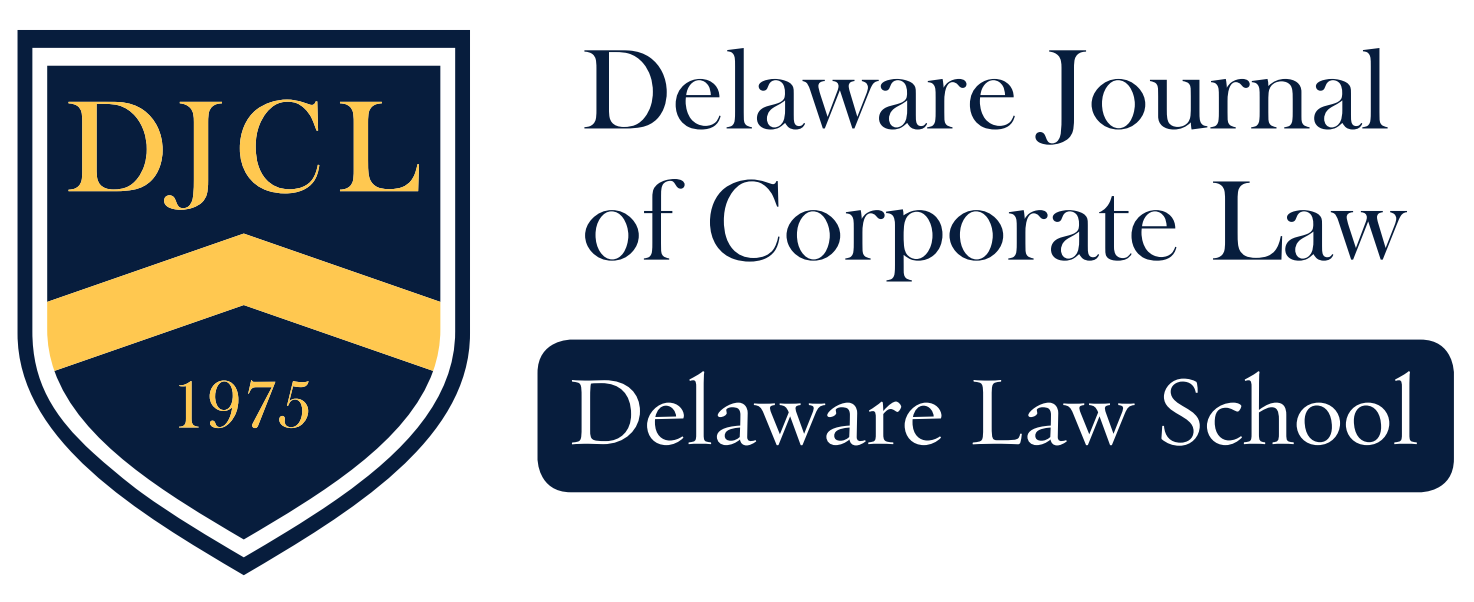By Marisa Mullins

When law students think of rapidly growing subsections or dynamic specialties of the law, Alternative Dispute Resolution (“ADR”)[1] may not immediately come to mind. However, ADR is a growing legal sector fueled by increased demand—offering valuable tangible benefits including lower legal costs and expedited resolution times.[2] ADR refers to any method of resolving disputes without formal litigation. Unlike bench or jury trial proceedings inside a courtroom, ADR processes and resolutions occur outside of any governmental authority[3] and are more flexible.[4] Common ADR methods include arbitration, mediation, conciliation and negotiation.[5]
The need for resolution stems from conflict between two parties on adversarial sides of an issue, and the processes include mediation, arbitration, private adjudication, third-party (or neutral) negotiation, and hybrid methods.[6] The desire of jurisdictions to reduce pressure on already strained court systems and the increased prevalence of sectors mandating that prospective litigants attempt alternative methods before proceeding to jury or bench trial has further increased demand for ADR. Vice Chancellor Joseph R. Slights, III from the Delaware Court of Chancery (“Slights”) has stated that demand for ADR has increased over the past decade from the judiciary system, corporations, employers, and individuals; Slights’ point is further supported by American Arbitration Association data.[7]

Arbitration[8] has long been used in labor, construction, and securities regulation, but is now gaining popularity in other types of business disputes. Forty-nine states have adopted the 1956 version of the Uniform Arbitration Act as state law; the act was revised in 2000 and subsequently adopted by twelve states.[9] The arbitration agreement and award are now enforceable under both state and federal law.[10] In a lecture at the Delaware Law School, the Honorable Francis J. Jones (“Jones”) illustrated the expansion of an increase in application of ADR and noted that demand for resolution by ADR across all areas of law was further compounded in 2020-2021 when COVID-19 created “the need [to social distance] for proceedings, impacting the docket and creating backlog”.[11] Jones stated, “[t]he amount of cases being tried civilly by juries is decreasing overtime dramatically. In large part due to risk-benefit analysis: there is significant opportunity cost of time, legal expense, and overall financial exposure in full litigation”.[12] Particularized expertise and knowledge in a specific area of law[13] may be important. By way of example, Jones noted commercial transactions may require specificity in Delaware given the complexity and expertise that goes into traditional and non-traditional solutions.[14]
ADR’s ROLE IN DELAWARE AS “A BUSINESS MECCA”
ADR is integral in establishing and maintaining Delaware’s national status as a “Business Mecca”.[15] Specialized courts, a diverse corporate law counsel, favorable corporate laws, and superior customer service (Division of Corporations is available 24/7) help make Delaware the preeminent state for business formation.[16] Sixty-five percent (65%) of Fortune 500 companies, more than fifty percent (50%+) of NASDAQ/NYSE traded companies, and eighty-five percent (85%) of all new IPOs are incorporated in Delaware.[17]
Delaware’s taxing structure is favorable including income, franchise, and tax rate structures (although notably Delaware’s tax rate is not the lowest in the country). More important than favorable taxes, businesses favor incorporation in Delaware because decades of jurisprudence from the state’s specialized court system increase predictability of legal outcomes.[18] The ability to expedite cases exists where a business can show both a colorable claim and threat of irreparable harm without prompt adjudication (litigation averages two years, but Delaware expedites 40%+/- of its cases in four months or less).[19] Franchise taxes, corporate, transfer, litigation and related fees account for nearly 45% of Delaware’s state revenue.[20]
Delaware is unique in that a “bright line” exists creating an absolute line where cases in equity are handled in Chancery Court, whereas those in law are handled in Superior Court.[21] The large volume of registered business entities, while beneficial for revenue generation in the state, creates challenges for the judiciary. Over the past several decades, this has created an additional need in the state for ADR—to expedite case resolution, make dockets more manageable, taking pressure off the court system for cases in both law and equity.
A LOOK AT FEDERAL ADR
Title 9 of the U.S. Code establishes federal law supporting arbitration. Based on Congress’s plenary power over interstate commerce, where Title 9 applies, its terms prevail over state law.[22] Federal cases include complex commercial, contract, securities, intellectual property, civil rights, and employment discrimination cases.
The Honorable Paul R. Wallace (“Wallace”) of the Delaware Superior Court provided insight into federal ADR,[23] where timeframes maybe longer, teams of two or three of lawyers may be involved, and unique logistics may exist because cases may include overseas participants. Wallace estimated less than five percent (5%) of cases proceed to federal trial (criminal and civil) and stated ADR is essential to “keep the system from overloading”.[24] Mirroring state-level demand, it is anticipated that the need for ADR on the federal level will continue to grow.
A DEEPER DIVE INTO MEDIATION
While many jurisdictions in the U.S. require or prefer retired judges serve as arbitrators, the field of mediation is more open to a variety of legal professionals. The National Bureau of Labor Statistics projects an almost nine percent (9%) increase in the specific legal subcategory of “arbitrators, mediators, and conciliators” over the ten-year period of 2021 to 2031.[25] In a lecture at Delaware Law, legal professor and mediation practitioner Yvonne Saville, Esq. stated that “the majority of the Delaware growth and career demand will occur in the ADR field of mediation specifically”.[26] Mediation may be voluntary or mandatory. Mandatory mediation, under Rule 174(c), as explained by Slights,[27] is required for issues including adult guardianship, trust, probate, and deed covenants. Since its inception, mediation has proven to be highly successful in terms of resolution and settlement success rations (typically, more successful rations versus arbitration generally). Risk management and mitigation are driving factors for ADR—particularly in voluntary mediation. Additionally, corporate organizations and business professionals can benefit significantly from reduced timeframes and cost saving benefits (the average cost of ADR is estimated to be $5,000/day).[28] Where certain intangibles exist (i.e., a highly sympathetic victim), ADR may be preferable to a jury trial as jury uncertainty exists due to human nature, emotional impact, and possible bias.[29]
Experts state that to have a successful career in mediation, mediators must be able to establish trust, listen carefully, and build rapport with the parties involved in ADR.[30] Mediators may be a judicial or non-judicial impartial third party (the individual need not be an attorney), and it is essential that mediators are able to both evaluate and facilitate.[31] The popularity of voluntary mediation has increased in Delaware, yet it remains vastly underutilized (estimated less than fifteen percent (<15% ) of cases invoke Chancery Rule 174(b)).[32] Delaware requires that parties from both sides “shall participate” in mediation; it is vital to know your audience and tailor the case accordingly.[33] In ADR, less education is needed compared to jury trials (ex. you are not teaching contract or medical malpractice to someone totally unfamiliar with the subject matter). Conversely, participants are generally more experienced and sophisticated.[34] Lawyers should stick to what is pertinent, dispositive, and relevant.[35] As ADR has and continues to evolve, the sector will continue to see hybrid designs and new procedures emerge to increase utilization and reduce cost.[36]
IN SUMMARY
Alternative dispute resolution is a high growth sector within the legal industry that continues to evolve. A variety of methods exist in ADR practice, including the emergence of hybrid models, with arbitration and mediation continuing to be the most frequently used in corporate and commercial cases. As a part of an ongoing lecture series at Delaware Law School, prominent guest lecturers shared personal experience and insight into ADR in Delaware, the nation’s “business mecca”. Lecturers shared in-depth knowledge related to corporate, personal, and criminal ADR segments. Growth in the sector has and will continue to be fueled by demand—experts and seasoned legal professionals in Delaware urge younger professionals and law students not to overlook this growing segment, especially if interested in corporate law.
About the Author
Marisa Mullins is a masters-prepared business consultant currently in her third year of study at Widener University Delaware Law School. Marisa is a member of the Journal, the Delaware Law School Moot Court Honor Society and Phi Kappa Alpha National Law Fraternity. While attending Delaware Law, Marisa has been recognized with several accolades including the highly competitive National Business Process, M.D. Sharp, Promushkin Law, and Bernard S. Wildstein awards. Marisa resides on the Eastern Shore of Maryland with her husband Ryan, two children (Hank, 5, and Julianne, 4) and Great Dane, Millie.

Marisa Mullins, MBA, J.D. Candidate
mamullins@widener.edu
[1] Legal Information Institute, Dispute Resolution, Cornell Law School Blog (Mar. 21, 2023, 9:24PM), http://www.law.cornell.edu/wex/dispute_resolution. Overview and definition stating: ADR methods have common characteristics – i.e., enabling the parties to find admissible solutions to their conflicts outside of traditional legal/court proceedings, but are governed by different rules. For instance, in negotiation there is no third party who intervenes to help the parties reach an agreement, unlike in mediation and conciliation, where the purpose of the third party is to promote an amicable agreement between the parties. In arbitration, the third party (an arbitrator or several arbitrators) will play an important role as it will render an arbitration award binding on the parties. Id.
[2] Id.
[3] Id.
[4] Friedman, George, 8 Reasons to Choose ADR over Litigation to Resolve Your Dispute, Arbitration Resolution Services, Inc. (Mar. 22, 2018), http://www.arbresolution.com/8-reasons-to-choose-adr-litigation-resolve-dispute/ (stating that key advantages of ADR include rapidity, confidentiality, and flexibility).
[5] Legal Information Institute, supra note 1.
[6] See generally. Folberg, Golann, Kloppenberg & Stipanowich, Resolving Disputes: Theory, Practice and Law (Aspen Pub., 3rd ed. 2016).
[7] The Honorable Joseph R. Slights, III, Vice Chancellor, Delaware Court of Chancery, Address at Delaware Law School (Apr. 4, 2022); see also Max Kornblith, Latest Data: More arbitration claims than ever in 2019, but still far too few, FairShake (Mar. 31, 2020), http://www.fairshake.com/news/data-analysis/2019-year-in-review-arbitration/.
[8] Legal Information Institute, ADR, Cornell Law School Blog (Nov. 2021), https://www.law.cornell.edu/wex/adr (explaining that in arbitration, parties agree on single arbitrator (the preferred method), or there is a three-arbitrator panel where one side selects the first arbitrator, the other side selects the second, and the two arbitrators then select the third, thereby completing the panel).
[9] Id.
[10] Id.
[11] The Honorable Francis J. Jones, Delaware Superior Court, Address at Delaware Law School (April 18, 2022).
[12] Id.
[13] Id.
[14] Id.
[15] Slights, supra note 7.
[16] Id.
[17] Id.
[18] Id.
[19] Slights, supra note 7.
[20] Id.
[21] Id.
[22] Legal Information Institute, supra.
[23] The Honorable Paul R. Wallace, Delaware Superior Court, Address at Delaware Law School (Mar. 14, 2022).
[24] Id.
[25] National Employment Matrix, U.S. Bureau of Labor and Statistics, http://www.bls.gov/emp/tables/industry-occupation-matrix-industry.htm (last visited Apr. 2, 2023).
[26] Yvonne Saville, Esq. Professor, Delaware Law School, Address at Widener University Delaware Law School (Mar. 28, 2022).
[27] Slights, supra note 7.
[28] Id.
[29] Id.
[30] Saville, supra note 25.
[31] Id. See also, Slights, supra note 25.
[32] Slights, supra note 25.
[33] David A. White, Esq. & Bernard G. Conaway, Esq., Addresses at Delaware Law School (Feb. 21, 2022).
[34] Id.
[35] Id.
[36] Id.
